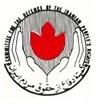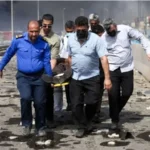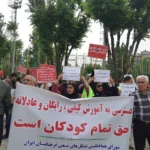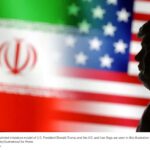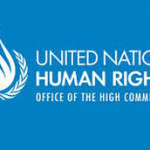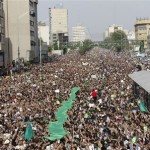
For better or worse, America remains the world’s leading military superpower. In Washington last week, a familiar row erupted over how best that power should be used. Past targets have included Soviet Russia, al-Qaida in Afghanistan and Saddam Hussein in Iraq. Today the international bogeyman topping the White House’s to-do list is Iran.
Once again the US is in the process of deciding whether to go to war. As always, it is a tangled, messy and dishonest business. On one side, favouring punitive action, stand the Iran hawks. They include neoconservative retreads such as John Bolton, Donald Trump’s national security adviser, who championed the 2003 Iraq invasion; Mike Pompeo, a former CIA director and Christian evangelical who heads the state department; and Mike Pence, the ascetic US vice-president.
On the other side, opposing escalation, stand Democratic party leaders in Congress and a clutch of presidential hopefuls; sceptical Pentagon generals and security agency officials who trust Bolton as far as they can toss an IED; a majority of Washington’s more important allies in the EU and Nato; and China and Russia, which oppose American global power-plays on principle.
The focus of the row was secret intelligence, reportedly gathered by US satellites over recent weeks and presented to officials on 3 May. The photographs purported to show Iranian Revolutionary Guards loading missiles onto dhows in the Gulf. Their presumed purpose was to attack American and allied naval or commercial shipping in the Strait of Hormuz, through which much of the world’s oil supplies pass.
The existence of the surveillance photos was top secret – until the information inexplicably leaked to the media last Wednesday. Oddly enough, a few days earlier Saudi Arabia – America’s close ally and sworn foe of Iran – had reported attacks on four tankers in the Strait. Oddly again, no one claimed responsibility and Tehran denied all knowledge. Marine insurers pointed the finger at Iran’s Houthi allies. But while admitting it had no proof, the pro-war camp in Washington immediately blamed Iran or its proxy forces.
The reaction from Bolton and Pompeo was swift. Citing yet more secret intelligence that Iran was rallying Shia militias in Iraq and Syria to “prepare for war”, they had already expedited military reinforcements to the Middle East – an aircraft carrier battlegroup and nuclear-armed bombers. Pompeo dramatically cancelled a visit to Germany and flew to Baghdad to warn of the threat.

In the wake of the tanker attacks, the administration upped the ante. Details of a White House national security meeting were also leaked. They revealed that Patrick Shanahan, the acting defence secretary, had presented a new plan to send 120,000 troops to the Middle East, supposedly to deter Iran. Another option under discussion was multiple sea and air-launched missile strikes on Iran’s military facilities and suspected nuclear-related targets.
Since then, White House officials have persistently talked up an “imminent” threat from Tehran, Pompeo has personally briefed EU governments (he reportedly got a cool reception), and the US embassy in Baghdad has been partly evacuated. But there’s a snag. Throughout this accelerating process of military and diplomatic escalation, the US has not produced any firm, on-the-record evidence of hostile Iranian action.
For anybody who recalls the disinformation, untruths and downright lies that preceded the Iraq invasion, the similarities with Iran are uncanny – and disturbing. Nancy Pelosi, the House Speaker, was among those complaining last week about a blind drift to war. “Did we learn the lessons of the last decade?” asked Chuck Schumer, the Democratic leader in the Senate. “There is an alarming lack of clarity here, there’s a lack of strategy, and there’s a lack of consultation.”
Smelling a familiar rat, Democrats are investigating claims that Pompeo’s state department slanted an annual global arms control report to cast Iran in a bad light.
In this respect Bolton’s current role is particularly suspect. After Iraq went disastrously wrong, he was widely accused of massaging and manipulating secret intelligence to falsely bolster the case for war. Inaccurate US claims that Saddam possessed and was ready to use weapons of mass destruction – claims infamously echoed by Britain’s the then prime minister Tony Blair – fatally discredited the strategy.
Memories of the Iraq fiasco may have influenced Major-General Chris Ghika, the British deputy commander of the coalition against Isis, when he was asked about the American claims last week. “There’s been no increased threat from Iranian-backed forces in Iraq and Syria,” he said. Since Ghika is based in Baghdad, he might be expected to know best.
That did not stop the Pentagon issuing an extraordinary rebuttal, saying the general’s comments “run counter to the identified credible threats”. In another echo of Iraq, the British government caved in to US pressure and disowned Ghika the following day, saying that it fully agreed with Washington’s threat-level assessment.
The crisis began to build in earnest last year when Trump reneged on the 2015 nuclear agreement between Iran and the US, Europe, China and Russia. When signed, the deal was hailed as a major diplomatic achievement, allaying fears Iran was secretly trying to acquire nuclear weapons by imposing strict, independently verifiable curbs. The US decision to trash it was just the start.
Trump went on to impose probably the most severe, wide-ranging economic and financial sanctions ever levied, including an embargo on oil sales. He also vowed to punish third countries, including allies such as Britain, if they continued to trade with Tehran.
Trump justified his action by claiming the 2015 treaty was a bad deal. Iran might still eventually build a bomb, he claimed, while the pact did not constrain its ballistic missile programme or its “destabilising” regional activities. He just wanted Iran to act like a “normal” country.
That was interpreted, in Iran and elsewhere, as a naked bid to enforce regime change. Indeed, Trump has encouraged opposition street protests amid suggestions the regime’s expensive foreign entanglements are unpopular with Iran’s hard-pressed, tax-paying public.
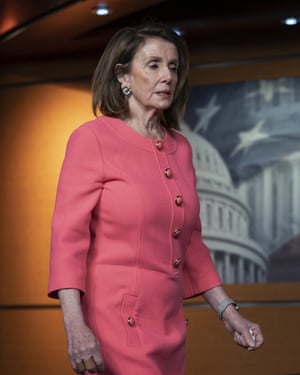
In recent weeks, the US has stepped up its so-called “maximum pressure” campaign, designating the Revolutionary Guards a terrorist organisation and cancelling remaining waivers allowing some countries to buy Iranian oil. Iran’s oil exports have now fallen to 1 million barrels per day (BPD) or less from a peak of 2.8 million BPD. Exports could fall as low as 500,000 BPD this month.
Pompeo and Bolton also set a new trap over proxy forces. Official policy now states that “any attack on US interests or on those of our allies” will be met with “unrelenting force” directed at Iran. Any one of dozens of pro-Iran Shia militias in Lebanon, Iraq, Syria or Yemen, or any terrorist group or individual wishing to make trouble, potentially has the power to provoke direct US-Iran armed confrontation by attacking “US interests and allies” anywhere at all.
Relentless, seemingly implacable American hostility is producing an inevitable reaction inside Iran where, for many, the US-Iran war of 2019 has already begun. The military encirclement is tightening. The country is being strangled economically. Ordinary people face growing hardship. Emboldened regional enemies are queuing up to strike. And it seems nothing will silence Washington’s war drums.
That, at least, is how Iranian hardliners, including the powerful clerical establishment, the judiciary, conservative media outlets and Revolutionary Guard commanders, increasingly appear to view the present crisis. Their influence is growing as the inability of Hassan Rouhani, Iran’s moderate president, and his alliesto fend off US pressure becomes more evident.
Defiant Iranian rhetoric is flying hard and fast. Scorning America’s “gun to the head”, the Revolutionary Guards general Saleh Jokar warned last week that Iran could “easily” strike US navy ships in the Gulf. But his assertion that the US “cannot afford the costs of a new war” smacked of dangerously delusional thinking. Saddam made a similar mistake.
Rouhani’s policy of “strategic patience” is now widely dismissed as a failure. Bending to his critics this month, he said Iran would cease to observe some of the terms of the 2015 deal. At the same time, he urged European countries that still support the agreement to do more to circumvent US sanctions. He received short shrift from France and Britain, while at home his move was dismissed as “minimal”.
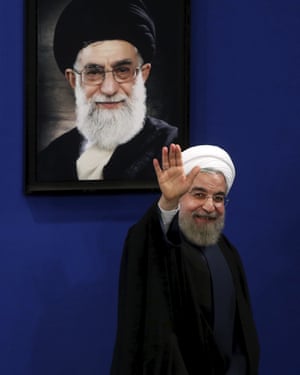
Rouhani’s second term has two years to run, but he is plainly in trouble. His recent call to the public to prepare for sacrifices even greater than those during Iran’s 1980s war with Iraq did not go down well. Internal repression, arbitrary arrests and censorship of social media, which he once vowed to eliminate, are increasing. Hopes of democratic reform that blossomed in the 2009 “Persian spring” have faded.
US-Iran enmity is by no means new. It dates back to the 1979 revolution that overthrew the Shah, a western ally, and the subsequent, prolonged hostage siege at the US embassy in Tehran. Some Iranians believe the US has never forgiven that humiliation and has sought revenge ever since. That is given as a reason why Washington backed Saddam, and sold him weapons, during the Iran-Iraq war. Others say it is majority-Shia Iran’s emergence as a regional power that enrages the Americans and Trump’s allies, the Sunni Muslim patriarchs of Saudi Arabia.
In one sense, modern Iran is following a well worn path as its strength grows, extending its reach and influence in much the same way as 19th-century America. The chaotic aftermath of the Iraq invasion helped expand its grip. But many in the Sunni Arab world decry Iran’s advance as malign, while Washington has never taken kindly to those who challenge its global prerogatives.
Iran’s role, with Russia and Hezbollah in Lebanon, in rescuing Bashar al-Assad’s Alawite regime in Syria is nothing to be proud of. Many atrocities and much suffering can be laid at its door. Iran’s hand is also seen in the fight between Houthi rebels, the Saudis and the UAE in Yemen. Bahrain, among others, accuses Tehran of stirring up trouble with its Shia majority. In all these cases, in fact, the Shia-Sunni divide is an important factor.
Most of all, Iran’s growing regional power is seen by the US as a direct threat to Israel. Leading Iranian political and military figures, notably the former president, Mahmoud Ahmadinejad, have repeatedly threatened to wipe the country off the map. Iran is building military bases in Syria, within close missile range. And Benjamin Netanyahu, Israel’s prime minister and Trump buddy, remains convinced the mullahs, despite denials, are hell-bent on acquiring nuclear weapons.
In short, America does not lack for reasons to fear Iran. But does that justify the use of military force? Like Iraq in 2003, all the ingredients for war are again present in 2019: old grudges, new weapons, dodgy intelligence, personal animus, opposing ideologies, regional, territorial and religious rivalries, and competition for resources, particularly oil.
Optimists say both sides are posturing, that it is a war of nerves, not missiles, and that all-out conflict is unlikely. Pessimists say battle has already been joined on multiple fronts and will surely escalate.
Strangely, given his record, Trump could be the person to stop the dread descent to war. Though he does not give a fig about democratic self-determination or human rights, he would like to see a pro-western government in Tehran. His Israeli and Saudi allies desperately want to de-fang Iran and he insists he will defend US interests. He has surrounded himself with hawks and headbangers. On both sides the potential for miscalculation – of war by accident – is massive.
Yet Trump says he does not want a fight and has offered to talk to Iran’s leaders, possibly using Swiss intermediaries. He has consistently criticised unpopular and expensive armed interventions in the Middle East. His gut instinct is to fight America’s battles by all means other than military. He would be loath to launch another war as US election year approaches.
As is often the case with this president, confusion reigns over what he really wants. Is this confrontation about permanently stifling Iranian nuclear ambitions? Ending its missile programme? Curbing its regional influence? Or all-out, forcible regime change? Amid myriad, alarming uncertainties, perhaps the biggest question now is: which way will Trump jump?
The proxy factor
Recent attacks on Saudi oil tankers and allegedly heightened threats to US forces in Iraq and Syria are blamed by Washington on Iranian “proxy forces”, a reference to regionally based Shia militias owing allegiance to Tehran.
Iraq The Quds Force, a branch of Iran’s Revolutionary Guards, supposedly controls up to 140,000 Shia fighters.
Syria Iran has reportedly deployed Quds Force units to support the Assad regime and confront Israel.
Lebanon Iran’s clerics and Qassem Suleimani, the Quds Force commander, have close links to Hezbollah, Lebanon’s most powerful anti-Israel military organisation.
Yemen The insurrectionary Ansar Allah, better known as the Houthis, is the dominant force fighting Iran’s enemy, Saudi Arabia. Iran denies arming the group.
Gaza Iran backs Palestinian Islamic Jihad in its struggle against what Tehran terms the “Zionist enemy”.

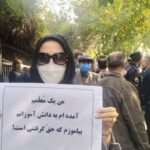

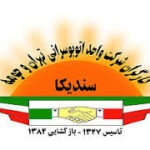






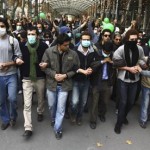
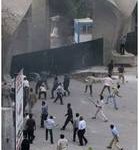
 Posted in
Posted in 